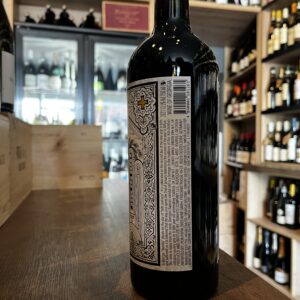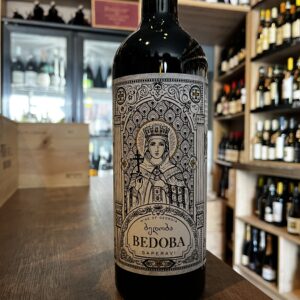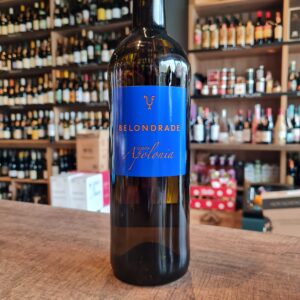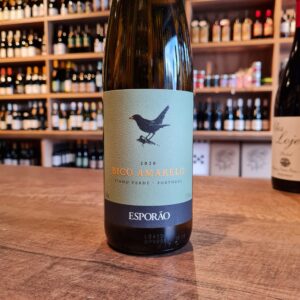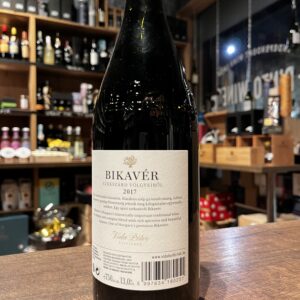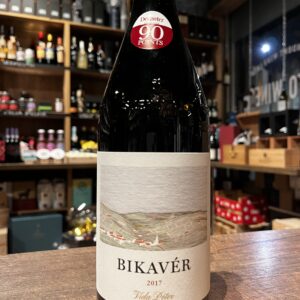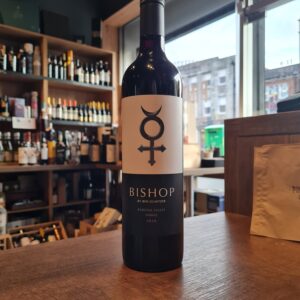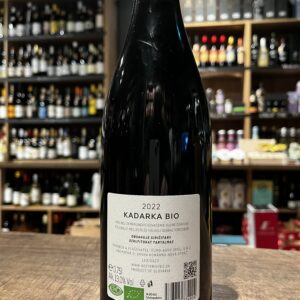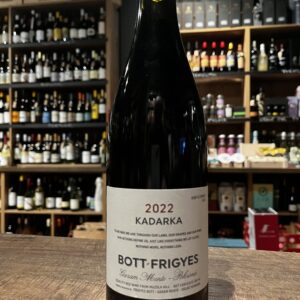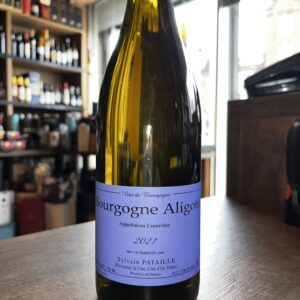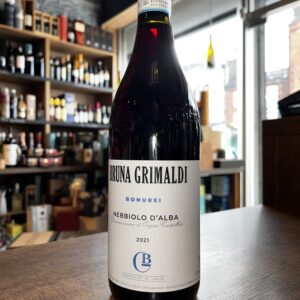-
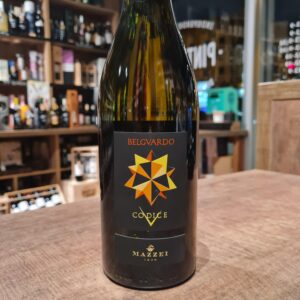 That of the Mazzei is one of the longest and most structured stories that wine Tuscany can give. A story that has as its fulcrum the Chianti Classico and precisely the Castello di Fonterutoli; today a modern cellar with 117 hectares of vineyards for a production of 800,000 bottles. But also a story, made up of great personalities such as, to stay in the near future, Lapo Mazzei, in a period of strong changes, at the same time lays the foundations of today's company. Today, at the helm of this company are the sons Filippi and Francesco who over time have achieved significant goals and given the company a broader scope starting with some acquisitions, even outside Tuscany. In the mid-90s, however, the Belguardo estate project in Maremma was born, with 34 hectares of vineyards. From here comes a non-trivial variation of Vermentino, now it has become the main vine of the Tuscan coast. The white Vermentino "Codice V" of the Belguardo estate of the Mazzei family is a wine born in the heart of the Maremma, on the hills of Grosseto and Montiano. The vines were planted with Vermentino clones originating from Corsica, on loose soils with a predominantly sandy matrix, facing south, south-west. Fermentation takes place in steel tanks at low temperatures and for 20% of the mass in terracotta dolium with maceration on the skins for 4 months. Before final assembly and bottling, the wine rests in steel and terracotta for a few months. on the hills of Grosseto and Montiano. Recommended with fish and white meat savoury dishes, risotto, porcini mushrooms. A tutti!
That of the Mazzei is one of the longest and most structured stories that wine Tuscany can give. A story that has as its fulcrum the Chianti Classico and precisely the Castello di Fonterutoli; today a modern cellar with 117 hectares of vineyards for a production of 800,000 bottles. But also a story, made up of great personalities such as, to stay in the near future, Lapo Mazzei, in a period of strong changes, at the same time lays the foundations of today's company. Today, at the helm of this company are the sons Filippi and Francesco who over time have achieved significant goals and given the company a broader scope starting with some acquisitions, even outside Tuscany. In the mid-90s, however, the Belguardo estate project in Maremma was born, with 34 hectares of vineyards. From here comes a non-trivial variation of Vermentino, now it has become the main vine of the Tuscan coast. The white Vermentino "Codice V" of the Belguardo estate of the Mazzei family is a wine born in the heart of the Maremma, on the hills of Grosseto and Montiano. The vines were planted with Vermentino clones originating from Corsica, on loose soils with a predominantly sandy matrix, facing south, south-west. Fermentation takes place in steel tanks at low temperatures and for 20% of the mass in terracotta dolium with maceration on the skins for 4 months. Before final assembly and bottling, the wine rests in steel and terracotta for a few months. on the hills of Grosseto and Montiano. Recommended with fish and white meat savoury dishes, risotto, porcini mushrooms. A tutti! -
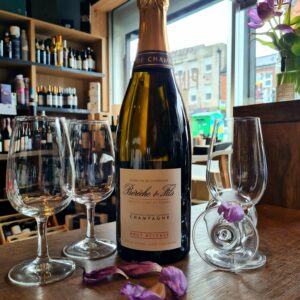 In one of mine first wine classes, the teacher said regarding pairing wines with meals. ''You can attempt everything, and please please do so, but don't matter what you will try, you will see that there is only one type of wine that will pair beautifully with all the meals throughout the day. that wine is Champagne!''. Oh dear was he right...Pair this one with a lovely cooked breakfast and you in for a treat. As for the background of this wine: Raphaël and Vincent Bérêche, two of Champagne’s rising stars, have been working alongside their father Jean-Pierre at their nine-hectare estate of Bérêche et Fils since 2004, and today they are putting an increasingly personal stamp on this thoughtfully-run Domaine. The Bérêche estate owns vines in several different sectors of Champagne, with the three primary areas being the immediate vicinity around Ludes and Craon de Ludes, the gravelly terroir of Ormes in the Petite Montagne, and the area around Mareuil-le-Port, on the left bank of the Vallée de la Marne. A small parcel is also found in Trépail, in the eastern Montagne de Reims. Most recently, the estate has acquired its first grand cru vineyard in 2012, a tiny, 15-are parcel in the village of Mailly. The estate's vineyards are planted with roughly equal parts of the three varieties, and increasing attention is being paid to natural viticulture—Bérêche completely stopped using chemical herbicides in 2004 and has planted cover crops in all of the vineyards, and since 2007 a portion of the vineyard is being converted to biodynamics. Sharp-eyed observers will note that beginning in 2013, Bérêche has changed its status from RM (récoltant-manipulant) to NM (négociant-manipulant). This was done for two reasons: the first was to augment the production of the Brut Réserve by about 15 to 20 percent, selecting grapes from three trusted growers in the villages of Ludes, Maily and Rilly-la-Montagne. These grapes will be used exclusively for the Brut Réserve, and the rest of Bérêche's wines remain entirely estate-grown. The second reason was the creation of a négociant range called Crus Sélectionnés, released under the label Raphaël et Vincent Bérêche. These are wines selected from various sources across the Champagne region, designed to illustrate and reflect their respective terroirs, with the first series of wines to be released in 2014. At Bérêche, vinification tends towards the traditional: parcels are vinified separately, with natural yeasts used for smaller tanks and selected yeasts for larger ones. The family has slowly been increasing the percentage of oak used in the cellar, and today about three-quarters of the production is vinified in barrel. The malolactic is systematically avoided, and the wines are bottled around May, without filtration and with a natural cold-settling, achieved by opening all of the cellar’s windows and waiting for three days. Disgorging is still done entirely by hand, and unlike many growers who are embracing the idea of concentrated must for the dosage, Bérèche adamantly prefers a traditional liqueur. Recently the Bérêches have begun to work more with cork for the second fermentation, believing that it results in a wine of more character and complexity. Raphaël’s father was always a firm believer in cork, but it requires a lot of extra work—now that Raphaël and Vincent are working with him at the estate, it’s easier to accomplish. Today, a quarter of the production is bottled with cork instead of capsule, spread over five different cuvées: Les Beaux Regards, Vallée de la Marne Rive Gauche, Le Cran, Reflet d'Antan and the Campania Remensis rosé. Pair it with: Oysters, Grilled fish, Salads, Cheeses, Starters & Canapes
In one of mine first wine classes, the teacher said regarding pairing wines with meals. ''You can attempt everything, and please please do so, but don't matter what you will try, you will see that there is only one type of wine that will pair beautifully with all the meals throughout the day. that wine is Champagne!''. Oh dear was he right...Pair this one with a lovely cooked breakfast and you in for a treat. As for the background of this wine: Raphaël and Vincent Bérêche, two of Champagne’s rising stars, have been working alongside their father Jean-Pierre at their nine-hectare estate of Bérêche et Fils since 2004, and today they are putting an increasingly personal stamp on this thoughtfully-run Domaine. The Bérêche estate owns vines in several different sectors of Champagne, with the three primary areas being the immediate vicinity around Ludes and Craon de Ludes, the gravelly terroir of Ormes in the Petite Montagne, and the area around Mareuil-le-Port, on the left bank of the Vallée de la Marne. A small parcel is also found in Trépail, in the eastern Montagne de Reims. Most recently, the estate has acquired its first grand cru vineyard in 2012, a tiny, 15-are parcel in the village of Mailly. The estate's vineyards are planted with roughly equal parts of the three varieties, and increasing attention is being paid to natural viticulture—Bérêche completely stopped using chemical herbicides in 2004 and has planted cover crops in all of the vineyards, and since 2007 a portion of the vineyard is being converted to biodynamics. Sharp-eyed observers will note that beginning in 2013, Bérêche has changed its status from RM (récoltant-manipulant) to NM (négociant-manipulant). This was done for two reasons: the first was to augment the production of the Brut Réserve by about 15 to 20 percent, selecting grapes from three trusted growers in the villages of Ludes, Maily and Rilly-la-Montagne. These grapes will be used exclusively for the Brut Réserve, and the rest of Bérêche's wines remain entirely estate-grown. The second reason was the creation of a négociant range called Crus Sélectionnés, released under the label Raphaël et Vincent Bérêche. These are wines selected from various sources across the Champagne region, designed to illustrate and reflect their respective terroirs, with the first series of wines to be released in 2014. At Bérêche, vinification tends towards the traditional: parcels are vinified separately, with natural yeasts used for smaller tanks and selected yeasts for larger ones. The family has slowly been increasing the percentage of oak used in the cellar, and today about three-quarters of the production is vinified in barrel. The malolactic is systematically avoided, and the wines are bottled around May, without filtration and with a natural cold-settling, achieved by opening all of the cellar’s windows and waiting for three days. Disgorging is still done entirely by hand, and unlike many growers who are embracing the idea of concentrated must for the dosage, Bérèche adamantly prefers a traditional liqueur. Recently the Bérêches have begun to work more with cork for the second fermentation, believing that it results in a wine of more character and complexity. Raphaël’s father was always a firm believer in cork, but it requires a lot of extra work—now that Raphaël and Vincent are working with him at the estate, it’s easier to accomplish. Today, a quarter of the production is bottled with cork instead of capsule, spread over five different cuvées: Les Beaux Regards, Vallée de la Marne Rive Gauche, Le Cran, Reflet d'Antan and the Campania Remensis rosé. Pair it with: Oysters, Grilled fish, Salads, Cheeses, Starters & Canapes -
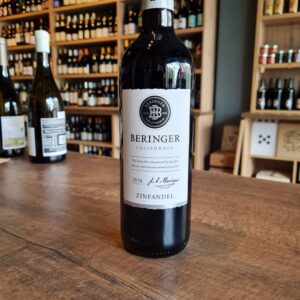 A quintessential California Zinfandel. Beringer has built a legacy crafting renowned wines from a prized collection of California vineyards, celebrating a remarkable winemaking tradition dating back to 1876 when the Napa winery was founded by Beringer brothers Frederick & Jacob. A Zin that definitely portrays some Classic California ripeness. Ripe blueberries, blackberries, plums, a hint of smoky and mineral characters and a touch perfumed (dried floral notes) on the nose. On the palate you’ll find that smoke and berry ripeness coming through, with a little tangy raspberry adding to a lengthy finish. Medium plus body with a silky mouthfeel, smooth light tannins and luscious acidity. I love Zins with a juicy bacon and smoked cheddar burger or with your favourite pizza. This one should not disappoint!
A quintessential California Zinfandel. Beringer has built a legacy crafting renowned wines from a prized collection of California vineyards, celebrating a remarkable winemaking tradition dating back to 1876 when the Napa winery was founded by Beringer brothers Frederick & Jacob. A Zin that definitely portrays some Classic California ripeness. Ripe blueberries, blackberries, plums, a hint of smoky and mineral characters and a touch perfumed (dried floral notes) on the nose. On the palate you’ll find that smoke and berry ripeness coming through, with a little tangy raspberry adding to a lengthy finish. Medium plus body with a silky mouthfeel, smooth light tannins and luscious acidity. I love Zins with a juicy bacon and smoked cheddar burger or with your favourite pizza. This one should not disappoint! -
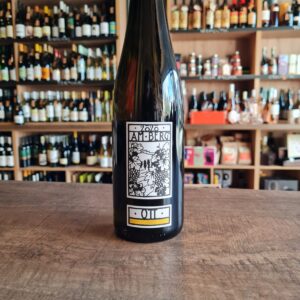 The Ott family has been growing and producing wine in the region of Wagram in Lower Austria since 1889. Bernhard Ott is of the fourth generation and has managed the winery since 1993, when he took the helm from his father. When he came home to the winery as a 21 year old, he was interested in producing wines of the highest quality. Bernhard wanted to prove that elegant and long lived wines could be produced from Grüner Veltliner grown on loess soil, specifically from Rosenberg vineyard. Bernhard replaced the old wooden casks with stainless steel and began working the vineyards with an aim for the highest high quality. In 2004 Benhard began composting, using organic cow manure from a friend in the region. In the past four years he’s used so much manure that the EU contacted him; “they didnt think it was possible to use 100,000 Euros worth of manure – they thought there was some accounting mistake. In 2006 he took a trip to the legendary biodynamic property Domaine La Romanée Conti in Vosne, with his best friend, Hans Reisetbauer. There, after a marathon tasting in the cellars with Aubert de Villaine, Bernhard committed to move to biodynamic viticulture. In 2007, with Johannes Hirsch, Fred Loimer and a group of like-minded producers, Respekt was formed. In 2014, after a very difficult harvest in which Bernhard didn’t bottle any single vineyard wines, he decided to work whole cluster saying “the stem is part of the grape. If you work without stems, you get more sweetness, more round fruit.” Today, Bernhard is looking back to previous generations for inspiration and to inform both his work in the vineyard and in the cellar. Grapes are picked at full ripeness, but thanks to biodynamic farming and composting, the sugar ripeness stays very moderate. “The compost helps with water regulation. Healthy soils give water when the weather is dry and take it back when there is too much. This also means no irrigation at all.” says Bernhard. In addition to working the soils with compost, Bernhard is a firm believer in not disrupting the eco-sysytem under the soils too much, preferring to plowing only 8cm deep. Harvest is done 100% by hand, something that is very important to note in a region who’s rolling hills and flatter landscape allow for machine harvesting. After picking and a strickt selection, the fruit is crushed in the press and maceration is done inside the press. The length of the maceration depends on the vintage, but also on the vineyard and the quality of the fruit. Bernhard uses closed pneumatic presses and has several different sizes. “This is how the press used to operate – there was only one pressing per day, so there was a maceration in the press.” explains Berhard. The juice is “browned” and racked into stainless steel where it is fermented by native yeasts without temperature control. Minimal amounts of sulfur are used at harvest and bottling and the cellar is very cold, inhibiting the development of malolactic. The single vineyard wines from the three Erste Lagen – Rosenberg, Spiegel and Stein – are on the full less until June or July before racking and bottling. The resulting wines are some of the very finest in Austria, straddling a juicy character with strong soil signatures.
The Ott family has been growing and producing wine in the region of Wagram in Lower Austria since 1889. Bernhard Ott is of the fourth generation and has managed the winery since 1993, when he took the helm from his father. When he came home to the winery as a 21 year old, he was interested in producing wines of the highest quality. Bernhard wanted to prove that elegant and long lived wines could be produced from Grüner Veltliner grown on loess soil, specifically from Rosenberg vineyard. Bernhard replaced the old wooden casks with stainless steel and began working the vineyards with an aim for the highest high quality. In 2004 Benhard began composting, using organic cow manure from a friend in the region. In the past four years he’s used so much manure that the EU contacted him; “they didnt think it was possible to use 100,000 Euros worth of manure – they thought there was some accounting mistake. In 2006 he took a trip to the legendary biodynamic property Domaine La Romanée Conti in Vosne, with his best friend, Hans Reisetbauer. There, after a marathon tasting in the cellars with Aubert de Villaine, Bernhard committed to move to biodynamic viticulture. In 2007, with Johannes Hirsch, Fred Loimer and a group of like-minded producers, Respekt was formed. In 2014, after a very difficult harvest in which Bernhard didn’t bottle any single vineyard wines, he decided to work whole cluster saying “the stem is part of the grape. If you work without stems, you get more sweetness, more round fruit.” Today, Bernhard is looking back to previous generations for inspiration and to inform both his work in the vineyard and in the cellar. Grapes are picked at full ripeness, but thanks to biodynamic farming and composting, the sugar ripeness stays very moderate. “The compost helps with water regulation. Healthy soils give water when the weather is dry and take it back when there is too much. This also means no irrigation at all.” says Bernhard. In addition to working the soils with compost, Bernhard is a firm believer in not disrupting the eco-sysytem under the soils too much, preferring to plowing only 8cm deep. Harvest is done 100% by hand, something that is very important to note in a region who’s rolling hills and flatter landscape allow for machine harvesting. After picking and a strickt selection, the fruit is crushed in the press and maceration is done inside the press. The length of the maceration depends on the vintage, but also on the vineyard and the quality of the fruit. Bernhard uses closed pneumatic presses and has several different sizes. “This is how the press used to operate – there was only one pressing per day, so there was a maceration in the press.” explains Berhard. The juice is “browned” and racked into stainless steel where it is fermented by native yeasts without temperature control. Minimal amounts of sulfur are used at harvest and bottling and the cellar is very cold, inhibiting the development of malolactic. The single vineyard wines from the three Erste Lagen – Rosenberg, Spiegel and Stein – are on the full less until June or July before racking and bottling. The resulting wines are some of the very finest in Austria, straddling a juicy character with strong soil signatures. -
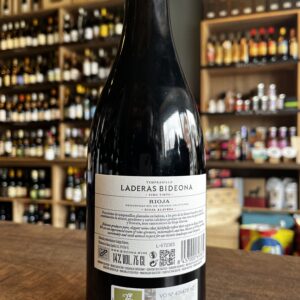
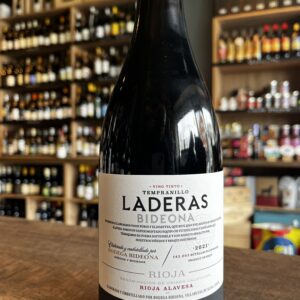 Badiola is a winery in the heart of Rioja Alavesa. Founded in 2018 by acquiring an existing winery, Badiola offers village and single vieyard wines that display the freshness, elegance and depth of flavours which distinguish the great wines from this part of Rioja. Badiola cultivates over 300 parcels of extraordinary vineyards on the slopes of the Sierra Cantabria, mainly in the villages of villabuena de Alava, Leza, Samaniego, Laguardia, Navaridas and Banos de Ebro. Averag age of the vines are 50 years old which means that fruit is of outstanding quality and well the vine is well inserted into the soil and not as prone to climatic issues that may arise. This wine is made from high quality, low yelding grapes from hillside(Laderas) vines on limestones soils, without the need for carbonic maceration to mask unripe or unhealthy fruit. About a quarter of the wine is aged from 4 to 6 months in new barriques of top quality French and American Oak, for added complexity and texture, but not overt oak character. A versatile and very satisfying drinking wine and a great example of cooler climate Tempranillo from Rioja Alavesa. A good match with both meat and fish-based tapas, mezze, rice dishes and pasta.
Badiola is a winery in the heart of Rioja Alavesa. Founded in 2018 by acquiring an existing winery, Badiola offers village and single vieyard wines that display the freshness, elegance and depth of flavours which distinguish the great wines from this part of Rioja. Badiola cultivates over 300 parcels of extraordinary vineyards on the slopes of the Sierra Cantabria, mainly in the villages of villabuena de Alava, Leza, Samaniego, Laguardia, Navaridas and Banos de Ebro. Averag age of the vines are 50 years old which means that fruit is of outstanding quality and well the vine is well inserted into the soil and not as prone to climatic issues that may arise. This wine is made from high quality, low yelding grapes from hillside(Laderas) vines on limestones soils, without the need for carbonic maceration to mask unripe or unhealthy fruit. About a quarter of the wine is aged from 4 to 6 months in new barriques of top quality French and American Oak, for added complexity and texture, but not overt oak character. A versatile and very satisfying drinking wine and a great example of cooler climate Tempranillo from Rioja Alavesa. A good match with both meat and fish-based tapas, mezze, rice dishes and pasta. -
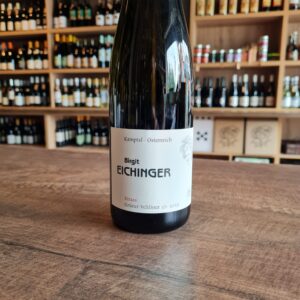 Weingut Birgit Eichinger was founded in 1992 by Birgit Eichinger and her husband Christian, who started out with roughly nine acres of vineyards shed from her parents' business, over time the vineyard area was expanded to 23 acres in the best traditional sites of Strass. This is a single-vineyard Grüner, from a vineyard whose loess (loose and sandy) soils and southward face are perfect for the cultivation of traditional Kamptal-style Grüner. The Birgit Eichinger Grüner Veltliner Strass Kamptal impresses with its elegantly dry taste. It was put on the bottle with only 1.8 grams of residual sugar. As one can of course expect with a wine, this Austrian naturally enchants with the finest balance in all dryness. Taste doesn't necessarily need sugar. On the palate, the texture of this light-footed white wine is wonderfully light. Due to the balanced fruit acidity, the Grüner Veltliner Rhinestone Kamptal flatters with velvety mouthfeel, without missing out on juicy liveliness. The finish comes with mineral notes of the soils dominated by loess soil and sandstone.
Weingut Birgit Eichinger was founded in 1992 by Birgit Eichinger and her husband Christian, who started out with roughly nine acres of vineyards shed from her parents' business, over time the vineyard area was expanded to 23 acres in the best traditional sites of Strass. This is a single-vineyard Grüner, from a vineyard whose loess (loose and sandy) soils and southward face are perfect for the cultivation of traditional Kamptal-style Grüner. The Birgit Eichinger Grüner Veltliner Strass Kamptal impresses with its elegantly dry taste. It was put on the bottle with only 1.8 grams of residual sugar. As one can of course expect with a wine, this Austrian naturally enchants with the finest balance in all dryness. Taste doesn't necessarily need sugar. On the palate, the texture of this light-footed white wine is wonderfully light. Due to the balanced fruit acidity, the Grüner Veltliner Rhinestone Kamptal flatters with velvety mouthfeel, without missing out on juicy liveliness. The finish comes with mineral notes of the soils dominated by loess soil and sandstone. -
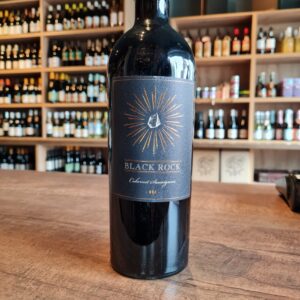 Black Rock is part of the Bronco Wine Company, which was formed in 1973 by Fred, Joseph and John Franzia. Since the start, they have been clear that the goal is to make wines for consumption, rather than for storage. At the same time, the quality must be as high as possible, at the lowest possible price. The name Bronco is a merger of brother and cousin after the brothers Fred and Joseph and their cousin John. Great aromas of red berries and fruit, with a touch of herbaceousness. Full-bodied, with healthy fruit tones, well-balanced tannins and a subtle hint of oak. Serve around 16-18 ° C as a perfect complement to grilled lamb chops, or to dishes on game or beef. Also nice for a cheese platter, with not too strong cheeses.
Black Rock is part of the Bronco Wine Company, which was formed in 1973 by Fred, Joseph and John Franzia. Since the start, they have been clear that the goal is to make wines for consumption, rather than for storage. At the same time, the quality must be as high as possible, at the lowest possible price. The name Bronco is a merger of brother and cousin after the brothers Fred and Joseph and their cousin John. Great aromas of red berries and fruit, with a touch of herbaceousness. Full-bodied, with healthy fruit tones, well-balanced tannins and a subtle hint of oak. Serve around 16-18 ° C as a perfect complement to grilled lamb chops, or to dishes on game or beef. Also nice for a cheese platter, with not too strong cheeses. -
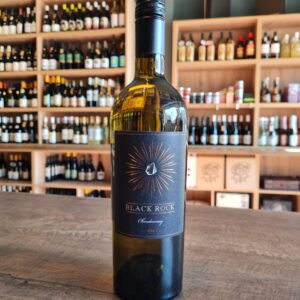 Black Rock is part of the Bronco Wine Company, which was formed in 1973 by Fred, Joseph and John Franzia. Since the start, they have been clear that the goal is to make wines for consumption, rather than for storage. At the same time, the quality must be as high as possible, at the lowest possible price. The name Bronco is a merger of brother and cousin after the brothers Fred and Joseph and their cousin John. Attractive tones of tropical fruit and a slightly spicy vanilla tone. Elegant and medium-bodied, with a nice balance and long aftertaste. Serve around 12 -14 ° C with chicken satay, or other dishes on white meat, a spicy stir-fry with noodles, fish or salad. Enjoy
Black Rock is part of the Bronco Wine Company, which was formed in 1973 by Fred, Joseph and John Franzia. Since the start, they have been clear that the goal is to make wines for consumption, rather than for storage. At the same time, the quality must be as high as possible, at the lowest possible price. The name Bronco is a merger of brother and cousin after the brothers Fred and Joseph and their cousin John. Attractive tones of tropical fruit and a slightly spicy vanilla tone. Elegant and medium-bodied, with a nice balance and long aftertaste. Serve around 12 -14 ° C with chicken satay, or other dishes on white meat, a spicy stir-fry with noodles, fish or salad. Enjoy -
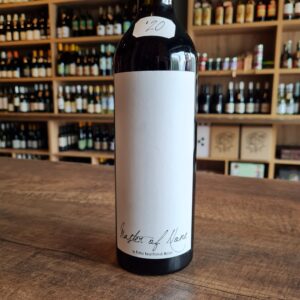 Master of none - Playing with words referring to themselves not being an expert in any one varietal or wine style hence the saying: “Jack of all trades, master of none”. Clever and humble, nonetheless, their wines are at the forefront not only of South Africa but in the world with the amazing wines they are producing. If you enjoy reds on the lighter end of the spectrum such as Pinot Noir or Gamay then Pieter's 'Master of None' will definitely be up your street! It comprises a blend of 5 different grape varieties from tiny vineyard plots across 6 distinct regions; 40% Grenache from Wellington, 30% Cinsault from sites in Darling and Stellenbosch, 8% Pinot Noir from Elgin and a further 8% Syrah from Swartland. Unusually, Pieter then tops up the blend with Voor Paardeberg Chenin Blanc, adding aromatic freshness to the finished wine. It drinks like a top-class Beaujolais – super bright and juicy, bursting with wild strawberry, cherry and with an earthy, smoky undercurrent. Enjoy at room temperature or slightly chilled – perfect for summer drinking! “In 2004, a lady came to my house to buy wine. She asked for anything but Shiraz. “I don’t drink Shiraz”, were her exact words. I poured her a glass of wine. She loved it and bought 3 cases. It was a straight Shiraz. It’s a fact – we do judge the book by its cover.”
Master of none - Playing with words referring to themselves not being an expert in any one varietal or wine style hence the saying: “Jack of all trades, master of none”. Clever and humble, nonetheless, their wines are at the forefront not only of South Africa but in the world with the amazing wines they are producing. If you enjoy reds on the lighter end of the spectrum such as Pinot Noir or Gamay then Pieter's 'Master of None' will definitely be up your street! It comprises a blend of 5 different grape varieties from tiny vineyard plots across 6 distinct regions; 40% Grenache from Wellington, 30% Cinsault from sites in Darling and Stellenbosch, 8% Pinot Noir from Elgin and a further 8% Syrah from Swartland. Unusually, Pieter then tops up the blend with Voor Paardeberg Chenin Blanc, adding aromatic freshness to the finished wine. It drinks like a top-class Beaujolais – super bright and juicy, bursting with wild strawberry, cherry and with an earthy, smoky undercurrent. Enjoy at room temperature or slightly chilled – perfect for summer drinking! “In 2004, a lady came to my house to buy wine. She asked for anything but Shiraz. “I don’t drink Shiraz”, were her exact words. I poured her a glass of wine. She loved it and bought 3 cases. It was a straight Shiraz. It’s a fact – we do judge the book by its cover.” -
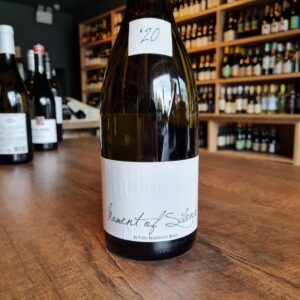 Moment of Silence is a South African wine made by superstar wine maker Pieter Walser. He buys in the fruit to make this blended wine of Viognier, Chenin Blanc and Chardonnay. It has been aged in old oak and it is a rich, powerful wine. Some of the fruit comes from vineyards which are over 50 years old.Stunning, all rounder, there is nothing you can fault in this wine. Aromas of candied lemon, cooked apple and mango with a core of minerality. Soft and voluptuous, it has a lovely ripeness and a fleshy, creamy mouthfeel, which leads to a perfect tangy freshness giving some zip to its otherwise mellow feel.
Moment of Silence is a South African wine made by superstar wine maker Pieter Walser. He buys in the fruit to make this blended wine of Viognier, Chenin Blanc and Chardonnay. It has been aged in old oak and it is a rich, powerful wine. Some of the fruit comes from vineyards which are over 50 years old.Stunning, all rounder, there is nothing you can fault in this wine. Aromas of candied lemon, cooked apple and mango with a core of minerality. Soft and voluptuous, it has a lovely ripeness and a fleshy, creamy mouthfeel, which leads to a perfect tangy freshness giving some zip to its otherwise mellow feel. -
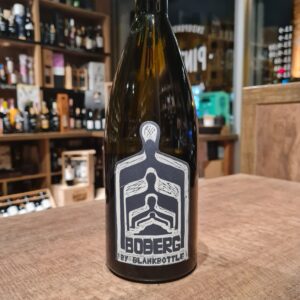 Pieter Walser from Blankbottle has got to be one of the most interesting, inspired, and avant-garde winemakers there is. His wine background mounts to college when he drove past a winery that had bottles with no labels on offer and he could only afford 3 cases. Went back and sold the 3 at a profit. That very moment started a fascinating story that would inspire any of us. As per his own words: “Moment of Silence predominantly comes from a farm in Wellington called Twyfeling. Boberg is situated on a farm right next to Twyfeling and literally looks onto the vineyards of Twyfeling. Now Twyfeling was owned by my direct family seven generations ago. So on the label it shows 7 generations with Boberg overlooking all seven generations of the Hauptfleisch family. 2015 was the first year that I bought the grapes from this Vineyard. The Farmer calls the vineyard BOBERG, which means “on top of the Mountain”. It was a neglected little vineyard, old bush vines with no irrigation. The farmer identified it as a site with potential and started with a restoration process. The vineyard grows in decomposed granitic soil in Wellington. The site is cooler than the others in the area.
Pieter Walser from Blankbottle has got to be one of the most interesting, inspired, and avant-garde winemakers there is. His wine background mounts to college when he drove past a winery that had bottles with no labels on offer and he could only afford 3 cases. Went back and sold the 3 at a profit. That very moment started a fascinating story that would inspire any of us. As per his own words: “Moment of Silence predominantly comes from a farm in Wellington called Twyfeling. Boberg is situated on a farm right next to Twyfeling and literally looks onto the vineyards of Twyfeling. Now Twyfeling was owned by my direct family seven generations ago. So on the label it shows 7 generations with Boberg overlooking all seven generations of the Hauptfleisch family. 2015 was the first year that I bought the grapes from this Vineyard. The Farmer calls the vineyard BOBERG, which means “on top of the Mountain”. It was a neglected little vineyard, old bush vines with no irrigation. The farmer identified it as a site with potential and started with a restoration process. The vineyard grows in decomposed granitic soil in Wellington. The site is cooler than the others in the area. -
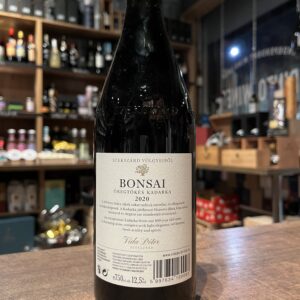
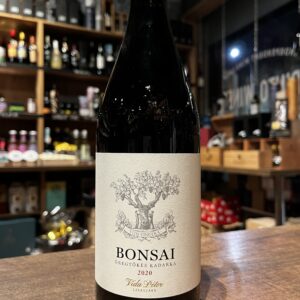 An exceptional Kadarka from the Vida winery's 100 year old vines. The history of the name for this wine is also peculiar. One day, Peter Sr. was presenting his winery to one of his Japanese partners. When they were about to approach the vineyards, the gentleman noticed this little vine and jumped off the car and started shouting “BONSAI!” pointing at them. The tiny appearance of these stocks resembles a Bonsai, which in Japanese culture represents wisdom, a wish for long life and is also a symbol of good luck. A small curiosity is that Kadarka is a grape that was widely available before the Soviet union and well praised. With the Iron Curtain nearly fell into extinction, it's delicious but takes a huge effort to grow and is best from old vines. Reminds you of any other grape with certain similarities?
An exceptional Kadarka from the Vida winery's 100 year old vines. The history of the name for this wine is also peculiar. One day, Peter Sr. was presenting his winery to one of his Japanese partners. When they were about to approach the vineyards, the gentleman noticed this little vine and jumped off the car and started shouting “BONSAI!” pointing at them. The tiny appearance of these stocks resembles a Bonsai, which in Japanese culture represents wisdom, a wish for long life and is also a symbol of good luck. A small curiosity is that Kadarka is a grape that was widely available before the Soviet union and well praised. With the Iron Curtain nearly fell into extinction, it's delicious but takes a huge effort to grow and is best from old vines. Reminds you of any other grape with certain similarities? -
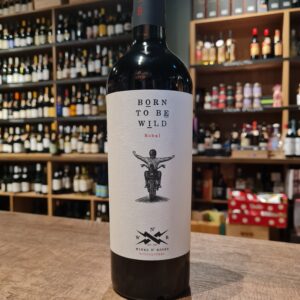 Mars Bonfire, Steppenwolf’s drummer’s brother, saw a poster which said,” Born To Ride” with a photo of a motorbike taking off from the ground surrounded by fire. Around that time, he had bought his first car and that’s how the idea came about to celebrate the freedom of being able to go where you want and when you want. NASA used “Born To Be Wild” to wake up their astronaut crews. And when a spaceship landed for the first time on Mars the small exploratory vehicle went down the ramp to the rhythm of “Get your motor running”. In 2004 Paris Hilton asked permission to use the song in her reality show The Simple Life. The band refused.” There are things Rock’n’Roll can’t accept.” The organic Bobal grapes are grown in poor clay soils situated in the west of the province of Valencia at 700 metres altitude. The vines grow in a ‘continental’ climate influenced by the Mediterranean. The wine spends 9 months in French and American oak barrels. Best enjoyed relaxing and/or with pasta, rice and red meat dishes. The Bobal grape variety has really high levels of resveratrol, an antioxidant and a heart healthy polyphenol, which helps metabolise fats.
Mars Bonfire, Steppenwolf’s drummer’s brother, saw a poster which said,” Born To Ride” with a photo of a motorbike taking off from the ground surrounded by fire. Around that time, he had bought his first car and that’s how the idea came about to celebrate the freedom of being able to go where you want and when you want. NASA used “Born To Be Wild” to wake up their astronaut crews. And when a spaceship landed for the first time on Mars the small exploratory vehicle went down the ramp to the rhythm of “Get your motor running”. In 2004 Paris Hilton asked permission to use the song in her reality show The Simple Life. The band refused.” There are things Rock’n’Roll can’t accept.” The organic Bobal grapes are grown in poor clay soils situated in the west of the province of Valencia at 700 metres altitude. The vines grow in a ‘continental’ climate influenced by the Mediterranean. The wine spends 9 months in French and American oak barrels. Best enjoyed relaxing and/or with pasta, rice and red meat dishes. The Bobal grape variety has really high levels of resveratrol, an antioxidant and a heart healthy polyphenol, which helps metabolise fats. -
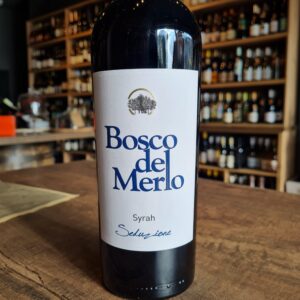 The Syrah is an international grape variety famous for its spicy notes that Bosco del Merlo interprets with great elegance. The grapes are harvest at optimally maturity during the last days of September. This Syrah ''Seduzione'' is large and round wine with great character. Enveloping and very pleasant for its harmony and wideness. Ideal for all meals, excellent with dishes of boiled and baked meats. Perfect with cold cuts and cheeses of medium maturing and insuperable alone, after dinner or in company.
The Syrah is an international grape variety famous for its spicy notes that Bosco del Merlo interprets with great elegance. The grapes are harvest at optimally maturity during the last days of September. This Syrah ''Seduzione'' is large and round wine with great character. Enveloping and very pleasant for its harmony and wideness. Ideal for all meals, excellent with dishes of boiled and baked meats. Perfect with cold cuts and cheeses of medium maturing and insuperable alone, after dinner or in company. -
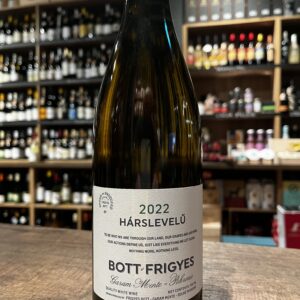 Hárslevelű is one of the most unique grape varieties in Central Europe - a relative of the Hungarian Furmint. It has aromas of linden blossom with honied chestnut, pear and apricot. Dry palate, balanced acidity with a silky texture, medium body. Spontaneous fermentation and 9 months on the lees in Stockinger barrels add complexity, while the great reductive strength comes from the volcanic terroir. Bott Frigyes is a tiny family producer in Southern Slovakia, who takes the Burgundian approach and quality to winemaking with a Central European twist. Single-vineyard Hárslevelű develops well in bottle, so you can also lay them down for a year or two. Very enjoyable on its own, however due to its rich flavours and a delicate volcanic minerality, you can go complex with food pairings. John Dory, turbot or even veal are good choices with high-quality Hárslevelű. Extremely limited. Maximum 1 bottle per order.
Hárslevelű is one of the most unique grape varieties in Central Europe - a relative of the Hungarian Furmint. It has aromas of linden blossom with honied chestnut, pear and apricot. Dry palate, balanced acidity with a silky texture, medium body. Spontaneous fermentation and 9 months on the lees in Stockinger barrels add complexity, while the great reductive strength comes from the volcanic terroir. Bott Frigyes is a tiny family producer in Southern Slovakia, who takes the Burgundian approach and quality to winemaking with a Central European twist. Single-vineyard Hárslevelű develops well in bottle, so you can also lay them down for a year or two. Very enjoyable on its own, however due to its rich flavours and a delicate volcanic minerality, you can go complex with food pairings. John Dory, turbot or even veal are good choices with high-quality Hárslevelű. Extremely limited. Maximum 1 bottle per order. -
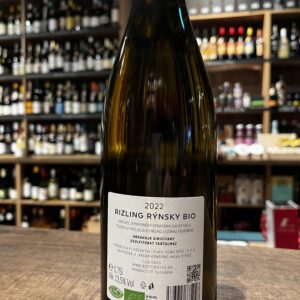
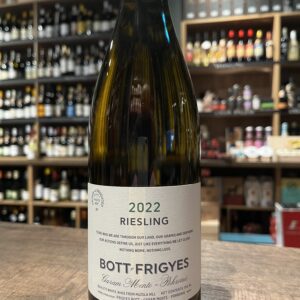 A beautifully clean biodynamic Riesling that will shock most enthusiasts and wine experts alike. Charming honied peaches on the nose, yet a superbly elegant and dry palate of great intensity and length. Spontaneous fermentation and 9 months on the lees in Stockinger barrels add complexity, while the great reductive strength comes from the volcanic terroir. Bott Frigyes is a tiny family producer in Southern Slovakia, who takes the Burgundian approach and quality to winemaking with a Central European twist. Pair it with Iberico pork chops grilled on the bone, finished in thyme infused butter. Sensational.
A beautifully clean biodynamic Riesling that will shock most enthusiasts and wine experts alike. Charming honied peaches on the nose, yet a superbly elegant and dry palate of great intensity and length. Spontaneous fermentation and 9 months on the lees in Stockinger barrels add complexity, while the great reductive strength comes from the volcanic terroir. Bott Frigyes is a tiny family producer in Southern Slovakia, who takes the Burgundian approach and quality to winemaking with a Central European twist. Pair it with Iberico pork chops grilled on the bone, finished in thyme infused butter. Sensational.


